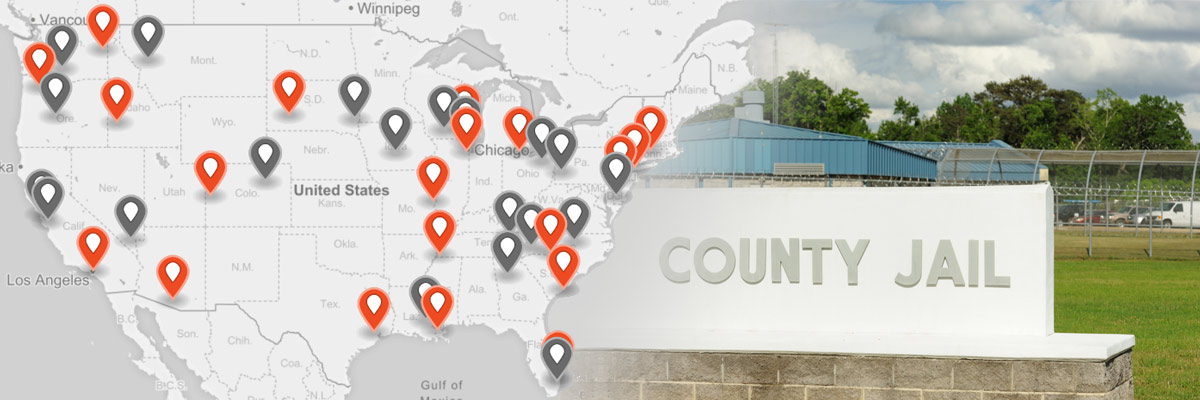It has been two eventful years since the launch of the Safety and Justice Challenge, MacArthur's ambitious effort to stimulate reform of local criminal justice systems, reduce racial and ethnic disparities, and change the way the nation thinks about and uses jails. The Challenge targets America's excessive reliance on jail incarceration, a key component and driver of mass incarceration, by supporting a diverse network of communities seeking better, fairer, and more balanced approaches to crime.
Our work began in 2015 with the selection of 20 jurisdictions from across the country to participate in a learning and leadership community called "the Safety and Justice Challenge Network," whose members were publicly committed to reducing their jail usage dramatically and making their local criminal justice systems fairer and more effective in the process. Teams from each of these jurisdictions were initially supported through a data analysis and system mapping process designed to identify local sources of unnecessary jail incarceration and racial and ethnic disparities in jail usage, and to enable collaborative leadership teams to generate comprehensive reform plans in response.

A first round of implementation funding was awarded to a group of these sites in 2016, with the rest receiving smaller grants to support continued progress and planning. We recently announced a second round of deep implementation grants. Now a total of 20 Challenge Network implementation sites are working with a national consortium of expert consultants to make broad changes in their local systems—deflecting or diverting low-level offenders, piloting or expanding programs that connect people with sources of treatment and help instead of jail, eliminating inefficiencies and cutting processing times to shorten jail stays, and otherwise rethinking and redesigning their systems from the ground up.
Following the establishment of a Safety and Justice Challenge Innovation Fund at the Urban Institute, Network implementation sites were joined earlier this year by a diverse group of 20 more "innovation sites," which are being supported with more modest grants to try out new ideas and novel approaches aimed at reducing jail incarceration and building capacity for future change efforts. Our hope in all this is to draw as much attention as possible to practical reform efforts in our current 40 sites in 25 states, and prepare the way for the spread of reform at the national level.
We knew going in that the problem of jail overuse and misuse has been a long time in the making, and that no quick fix is likely.
In the meantime, the day-to-day local work continues across the Network. In some instances, we think we may already be seeing results, with jail populations falling significantly in a handful of sites where reductions appear to be linked to initiative-supported changes in local policy and practice. But, in others, jail population numbers have so far failed to move, or even gone in the wrong direction. Sites have encountered a range of implementation challenges. Some are doing a good job of sustaining the kinds of ongoing leadership collaborations needed to reverse decades of jail growth; others seem to have drifted. Natural disasters—like Hurricanes Irma and Harvey—have affected implementation timelines in some places. So, too, have litigation, local elections, media flare-ups, political disputes, and other external events that distract attention and make focused and sustained collaboration harder. Monitoring these developments in so many sites, let alone managing them, is a challenge, but there is much to learn from all of them.
We knew going in that the problem of jail overuse and misuse has been a long time in the making, and that no quick fix is likely. We are also aware that this is a problematic moment for criminal justice reform in America. Our nation is profoundly divided on many issues, none more so than those implicating public safety, justice, and race. Basic consensus on principles, and even on facts, is often lacking. We have seen a recent uptick in violent crime nationally, and, in some quarters, a return to the "war on crime" rhetoric that did so much in previous decades to inflame public fears, cloud sensible policy discussion, and make our nation the world's greatest incarcerator.
Yet we cannot help but find encouragement in the commitment of our partners in the field—practitioners and leaders from across the political spectrum—not only to the day-to-day work of reform but to the larger principles and goals of the Safety and Justice Challenge. All along our initiative was predicated on the belief that local communities, with the right support, coordination, and expert assistance, can generate their own solutions to the problem of over-incarceration. The communities that make up the Challenge Network are fully justifying that belief. We are prepared to support them for the long haul because we expect that their work, by demonstrating a better alternative to incarceration as usual, will ultimately help to change the expectations and demands of the public for a fair, effective, and equitable system of justice.




